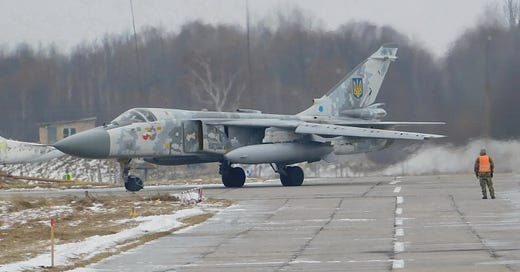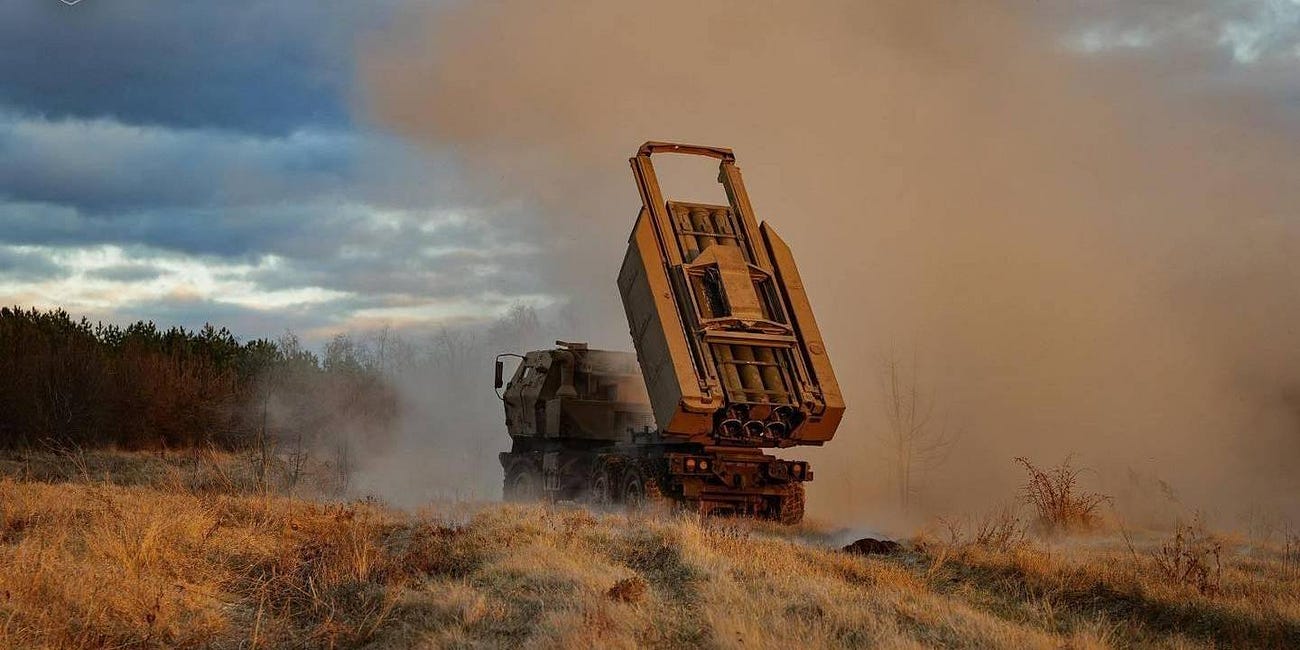Billions of Dollars of Fresh Munitions Should Arrive in Ukraine In the Coming Weeks. All This Weaponry Will Reshape the War.
Kyiv should expect shells, missiles and armored vehicles. Lots of them.
Ukraine is about to get a lot of weapons. And not only from the United States, which is planning a large emergency shipment of munitions and armored vehicles now that Republicans in the U.S. Congress finally have approved further U.S. aid to Ukraine over the objections of pro-Russia members within their own party.
The United Kingdom also just announced a $600-million military aid package for Ukraine—the U.K.’s biggest of the war. Between the Brits and the Americans, the Ukrainians should get Storm Shadow cruise missiles, Army Tactical Missile System ballistic missiles, M-2 Bradley fighting vehicles and lots and lots of ammunition for artillery, anti-tank teams and air-defense batteries.
It’s hard to overstate how much difference all of this fresh weaponry could make all along—and deep behind—the 600-mile front line as Russia’s wider war on Ukraine grinds into its third year.
The M-2s and ammunition should help to stabilize the front line and finally halt Russia’s winter-spring offensive, which has made incremental gains in eastern sectors. The ATACMS and Storm Shadows will add heft to Ukraine’s escalating campaign of deep strikes targeting the Russian rear.
The U.S. House of Representatives approved $61 billion in fresh aid to Ukraine on Saturday. The U.S. Senate should vote on the aid on Tuesday. U.S. president Joe Biden has said he promptly will sign the legislation into law—potentially Tuesday night.
Pentagon planners already have set aside ammo and vehicles for immediate transfer via U.S. Air Force cargo planes and U.S. Navy sealift ships. The weapons likely will land in Germany and Poland for onward shipment to Ukraine. Delivering this “larger-than-normal” batch of military aid, to borrow Politico’s description, could take a week or so.
Expect the U.S. aid package to be worth billions of dollars and include tens of thousands, or even hundreds of thousands, of 155-millimeter artillery rounds; thousands of air-defense missiles; scores of ATACMS and potentially enough M-2s to make whole the Ukrainian army’s 47th Mechanized Brigade, Ukraine’s sole operator of the 42-ton fighting vehicles.
Counterattacking Russian assault groups west of the ruins of Avdiivka and peppering them with 25-millimeter auto-cannon fire, the 47th Brigade’s M-2 crews have blunted Russia’s winter offensive in that sector—and minimized Ukraine’s territorial losses as its stock of artillery ammo bottomed out.
The Americans shipped just 200 or so M-2s before Republicans cut off aid last fall, however—and the Russians have destroyed around 40 of the heavily-protected vehicles, damaged another 30 and captured several more. All that is to say, the 47th Brigade is running out of its best vehicles. But that’s about to change.
Also about to change: Ukraine’s artillery disadvantage. In the most dire weeks for Ukrainian gunners back in February, they were firing just 2,000 shells a day—a fifth what Russian gunners could fire.
In the coming weeks, the ratio should even out. The Americans could ship around a million shells before that $61 billion in fresh aid expires at the end of this year. Meanwhile, a Czech-led initiative is delivering another million shells.
That’s 8,300 shells a day for eight months, just from these two sources. Ukraine also produces its own shells—and gets them in smaller batches from other allies. Don’t be surprised if Ukrainian batteries can fire 10,000 rounds a day as early as this summer.
The Americans also should be sending missiles for Ukraine’s Patriot air-defense batteries, if not additional batteries. Right now, the Ukrainian air force has just four Patriot batteries—one it got from the USA, three that came from Germany—and assigns one each to major cities: Kyiv, Kharkiv, Odesa and potentially Dnipro.
The 90-mile Patriots are Ukraine’s best air-defense missiles. But they all ran low—or out—earlier this month as Russia’s doubled down on its missile and drone raids targeting Ukrainian cities. The Patriot battery in Kyiv was unable to defeat a Russian missile barrage that destroyed the city’s most important power plant on April 11. “We ran out of all missiles,” Ukrainian president Volodymyr Zelensky told PBS.
More Patriots means fewer Russian hits on apartment complexes, hospitals, schools and power plants. More Patriots means less suffering for Ukrainian civilians.
The new shipment of Storm Shadows from the United Kingdom will help the Ukrainian air force to answer the Russian missile raids. The 190-mile-range cruise missiles, fired by the Ukrainian air force’s Sukhoi Su-24 bombers, hold at risk that vital middle zone between the front line and the deep rear.
Ukraine’s artillery and battlefield rockets strike targets along the front: troop concentrations, artillery emplacements, forward bases for drone teams. Ukraine’s long-range strike drones strike targets in the targets in the rear: air bases, oil refineries, weapons factories. Ukraine’s cruise missiles and ballistic missiles hit air-defense sites, command posts and supply lines.
And they also harry the Russian navy’s Black Sea Fleet at its vulnerable main anchorage in Sevastopol, in occupied Crimea just 160 miles from the front line.
Consider the implications. In two big consignments from the United States and the United Kingdom, Ukraine is about to make good its biggest shortfalls for the close tactical fight and the medium-distance operational fight while also stiffening its strategic defenses protecting the Ukrainian people.
For friends of a free Ukraine and enemies of authoritarian Russia, this isn’t just good news. It’s the best news in months.
Read more:
The Ukrainians Are About to Get a Lot More American-Made ATACMS Rockets. The Russians Are Worried.
Six months after blocking further U.S. aid to Ukraine at the behest of a pro-Russian fringe of the majority Republican Party, Speaker of the U.S. House of Representatives Mike Johnson finally relented to intense private and public pressure—and put Pres. Joe Biden’s languishi…






